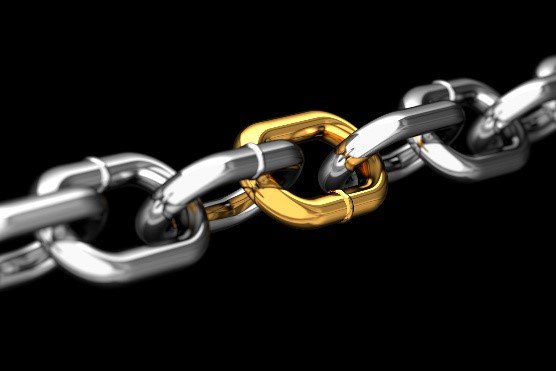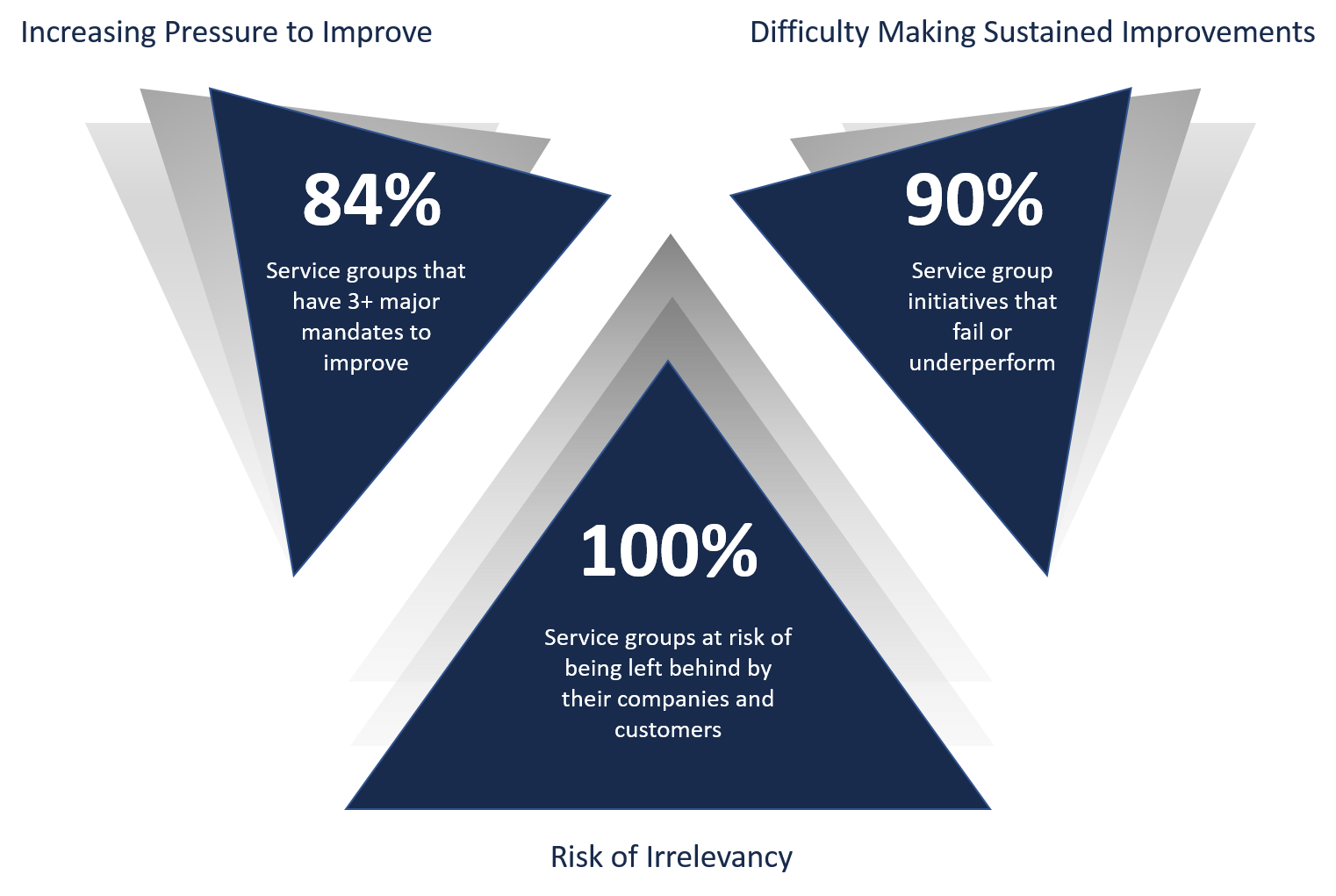A Reliable Performance Improvement Approach
As the U.S. and other developed countries continue their evolution toward a service economy, the number of service groups is multiplying rapidly, and service group excellence has become essential. But what exactly is a service group? There are two types.
- External Service Groups: Have external customers, and include consulting and professional services groups.
- Internal Service Groups: Have internal customers, and include functional groups such as HR, IT, Finance and Legal.
Whether a service group is internal or external, it faces certain intrinsic challenges.
The Service Group Challenge
The primary challenge that service groups face is to change and innovate quickly or risk becoming irrelevant to their customers. Customer needs and expectations change quickly. Demand for new and improved services is constant, and the need to use technology to leverage talent is paramount. Our research indicates that 84% of all service groups have three or more major mandates to change and improve services. Keep up, or your customers will go elsewhere.
In the face of this pressure to improve, the unfortunate reality is that, in general, service groups are not very good at improving and innovating. While there are always exceptions, over 90% of all service group improvement initiatives fail or significantly underperform.
We call this the “Big Squeeze.” Caught between the need to change and a substantial difficulty in doing so, service groups can find themselves on a trajectory towards irrelevance.
For external service groups, poor customer satisfaction typically erodes revenue. It also hampers their ability to win new contracts and upsell existing accounts.
For internal service groups, unsatisfied internal customers can result in the outsourcing of some or all of the function, a reduction in the group’s budget, and/or exclusion from important business planning and decision making.
All of these symptoms are signs of becoming irrelevant.
The Big Squeeze
Why is Change So Difficult?
We believe there is one primary cause at the root of the difficulty. Most service group improvement initiatives fail or significantly underperform because they provide point solutions. They don’t address the service group “system.”
Don’t Make this Mistake
Significant service improvement comes from a robust, intact value chain with no “broken links.” However, most service group initiatives target one or two “links” in the chain, strive to improve those and essentially ignore the rest. The problem is that no matter how well those links work, when other links in the chain don’t work well, they block the flow of service and value to the customers. In the end, money and effort are expended on the initiative with little impact on the customer and disappointing returns to the service group. Time was wasted, and time is running out.
A Success Story
A large internal service group in a well-known internet technology company engaged Advance Consulting to help them with a customer focus program. At their direction we started by training their people in consultative, customer focus skills and behaviors. After the people had 6-8 weeks to put into practice what they had learned, we collected data from them on both success stories and obstacles to adoption, while continuing to monitor customer satisfaction and other performance metrics.
We found that organizational and operational obstacles such as dysfunction around how teams were formed and managed, and a culture that rewarded firefighter heroes over well-orchestrated teamwork were significantly blocking the adoption of the new skills and behaviors. Substantiating that was the fact that customer satisfaction levels remained low. The value chain was still broken.
To fix the “broken links in the value chain” we recommended actions to eliminate the obstacles. After most  obstacles were at least partially addressed, adoption moved forward and all performance indicators showed strong improvement. The value chain still wasn’t perfect, but it was intact enough for significant value to flow to the customers. What could have been a failed initiative became a success story because our client was willing to address their overall “system”, rather than stop at a point solution (i.e., training).
obstacles were at least partially addressed, adoption moved forward and all performance indicators showed strong improvement. The value chain still wasn’t perfect, but it was intact enough for significant value to flow to the customers. What could have been a failed initiative became a success story because our client was willing to address their overall “system”, rather than stop at a point solution (i.e., training).
What Service Groups Need
Clearly, service groups need a reliable approach for improving their service group performance. They need to go beyond point solutions toward a systemic approach that addresses the whole value chain. This will open the floodgate for value to flow to the customers. However, this will require working and thinking differently.
For more information, please contact us for a no-cost, no-obligation consultation.

